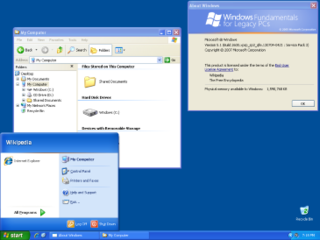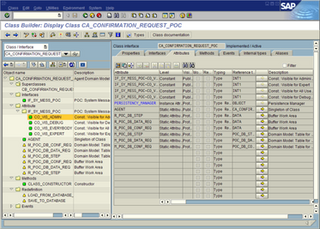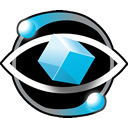Sources
This article includes a list of references, related reading, or external links, but its sources remain unclear because it lacks inline citations .(June 2011) |
LANlord was a DOS, Windows, and OS/2 workstation management system originally developed by Client Server Technologies Group, which got seed funding from Microcom who ultimately later sold the LANlord group in February 1994 to Central Point Software (acquired by Symantec Corporation in 1994).
LANlord offered a client–server architecture where distributed clients, called Agents, ran on workstations and reported back to, and took orders from, centralized servers that were accessed via a remote Manager Console. LANlord features include automatic inventory of hardware, software, driver and configuration information, software metering, virus detection and repair, remote viewing and editing of system files and integration with Microcom's Carbon Copy, a "remote control" software.
This article includes a list of references, related reading, or external links, but its sources remain unclear because it lacks inline citations .(June 2011) |

In computer networking, a thin client is a simple (low-performance) computer that has been optimized for establishing a remote connection with a server-based computing environment. They are sometimes known as network computers, or in their simplest form as zero clients. The server does most of the work, which can include launching software programs, performing calculations, and storing data. This contrasts with a rich client or a conventional personal computer; the former is also intended for working in a client–server model but has significant local processing power, while the latter aims to perform its function mostly locally.

The X Window System is a windowing system for bitmap displays, common on Unix-like operating systems.

A Beowulf cluster is a computer cluster of what are normally identical, commodity-grade computers networked into a small local area network with libraries and programs installed which allow processing to be shared among them. The result is a high-performance parallel computing cluster from inexpensive personal computer hardware.

In computing, a client is a piece of computer hardware or software that accesses a service made available by a server as part of the client–server model of computer networks. The server is often on another computer system, in which case the client accesses the service by way of a network.
Linux Terminal Server Project (LTSP) is a free and open source terminal server for Linux that allows many people to simultaneously use the same computer. Applications run on the server with a terminal known as a thin client handling input and output. Generally, terminals are low-powered, lack a hard disk and are quieter and more reliable than desktop computers because they do not have any moving parts.

A diskless node is a workstation or personal computer without disk drives, which employs network booting to load its operating system from a server.

Windows Fundamentals for Legacy PCs ("WinFLP") is a thin client release of the Windows NT operating system developed by Microsoft and optimized for older, less powerful hardware. It was released on July 8, 2006, nearly two years after its Windows XP SP2 counterpart was released in August 2004, and is not marketed as a full-fledged general purpose operating system, although it is functionally able to perform most of the tasks generally associated with one. It includes only certain functionality for local workloads such as security, management, document viewing related tasks and the .NET Framework. It is designed to work as a client–server solution with RDP clients or other third party clients such as Citrix ICA. Windows Fundamentals for Legacy PCs reached end of support on April 8, 2014 along with most other Windows XP editions.

Windows Server Update Services (WSUS), previously known as Software Update Services (SUS), is a computer program and network service developed by Microsoft Corporation that enables administrators to manage the distribution of updates and hotfixes released for Microsoft products to computers in a corporate environment. WSUS downloads these updates from the Microsoft Update website and then distributes them to computers on a network. WSUS is an integral component of Windows Server.

SAP GUI is the graphical user interface client in SAP ERP's 3-tier architecture of database, application server and client. It is software that runs on a Microsoft Windows, Apple Macintosh or Unix desktop, and allows a user to access SAP functionality in SAP applications such as SAP ERP and SAP Business Information Warehouse (BW). It is used for remote access to the SAP central server in a company network.
RIS, Remote Installation Services is a Microsoft-supplied server that allows PXE BIOS-enabled computers to remotely execute boot environment variables.
Centralized computing is computing done at a central location, using terminals that are attached to a central computer. The computer itself may control all the peripherals directly, or they may be attached via a terminal server. Alternatively, if the terminals have the capability, they may be able to connect to the central computer over the network. The terminals may be text terminals or thin clients, for example.
Network booting, shortened netboot, is the process of booting a computer from a network rather than a local drive. This method of booting can be used by routers, diskless workstations and centrally managed computers such as public computers at libraries and schools.

VMware Server is a discontinued free-of-charge virtualization-software server suite developed and supplied by VMware, Inc.

In computing, the term remote desktop refers to a software- or operating system feature that allows a personal computer's desktop environment to be run remotely off of one system, while being displayed on a separate client device. Remote desktop applications have varying features. Some allow attaching to an existing user's session and "remote controlling", either displaying the remote control session or blanking the screen. Taking over a desktop remotely is a form of remote administration.
This page is a comparison of notable remote desktop software available for various platforms.
An automounter is any program or software facility which automatically mounts filesystems in response to access operations by user programs. An automounter system utility, when notified of file and directory access attempts under selectively monitored subdirectory trees, dynamically and transparently makes local or remote devices accessible.
ConnectWise ScreenConnect, previously ConnectWise Control, is a self-hosted remote desktop software application. It was originally developed by Elsinore Technologies in 2008 under the name ScreenConnect, and is now owned by ConnectWise Inc.
GroupWise is a messaging and collaboration platform from Micro Focus that supports email, calendaring, personal information management, instant messaging, and document management. The GroupWise platform consists of desktop client software, which is available for Windows,, and the server software, which is supported on Windows Server and Linux.

Teradici Corporation was a privately held software company founded in 2004, which was acquired by HP Inc. in October 2021. Teradici initially developed a protocol (PCoIP) for compressing and decompressing images and sound when remotely accessing blade servers, and implemented it in hardware. This technology was later expanded to thin clients/zero clients for general Virtual Desktop Infrastructure. Teradici's protocol or hardware is used by HP, Dell-Wyse, Amulet Hotkey, Samsung, Amazon Web Services, Fujitsu, and VMware.

HP ZCentral Remote Boost, formerly known as HP Remote Graphics Software or HP RGS is a client-server remote desktop software developed by HP Inc. and initially launched in 2003. HP RGS enables remote access to high-performance workstations from many different devices including other Workstations, PCs, Windows tablets, MacBooks and thin-clients. The software is targeted at remote access to graphic intensive applications, Video editing and complex 3D models. Collaboration, or screen sharing, between multiple users, remote USB and sound, as well as Windows and Linux are also supported. HP markets RGS for "Real-Time Collaboration", "Workstation-Class Mobility" and "Remote Workers"